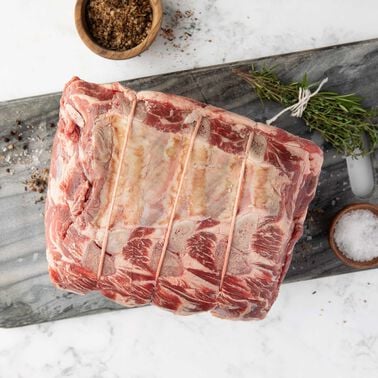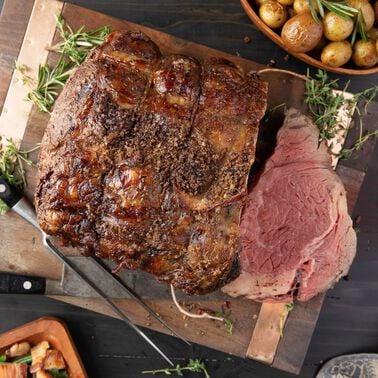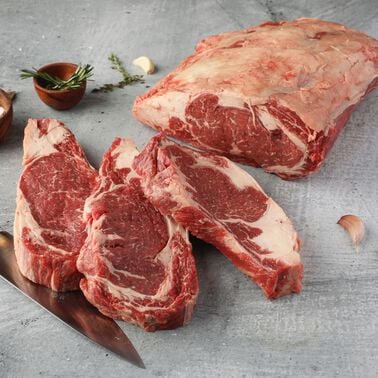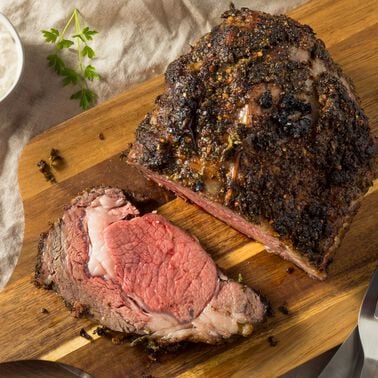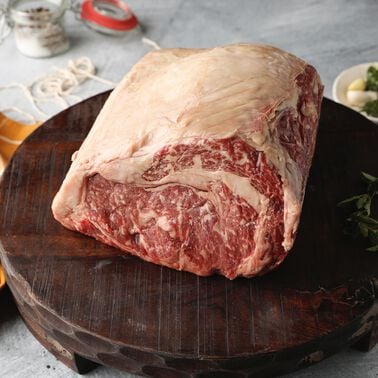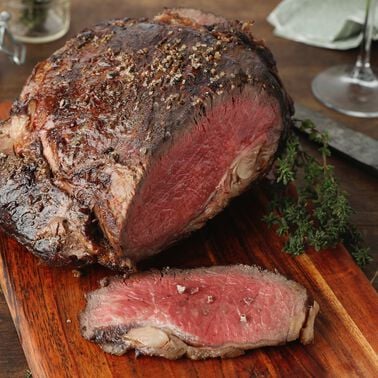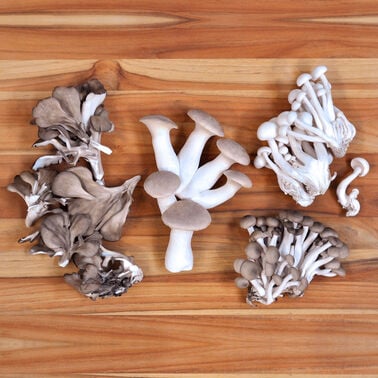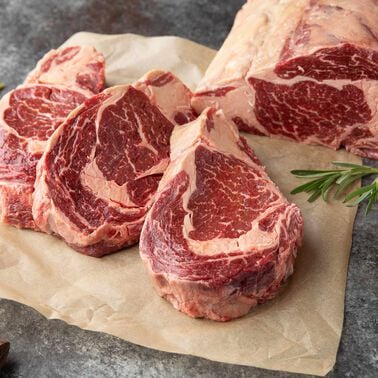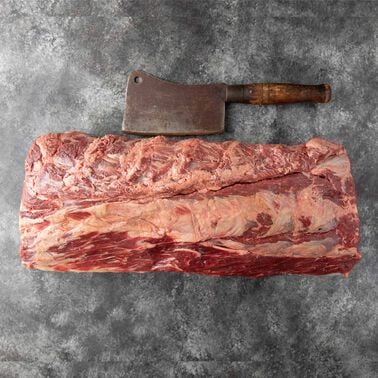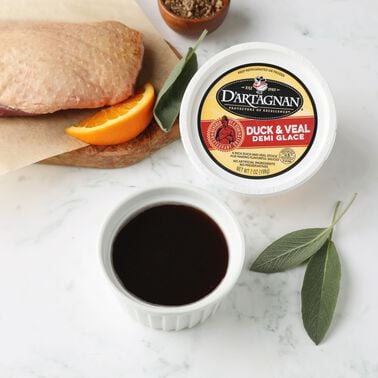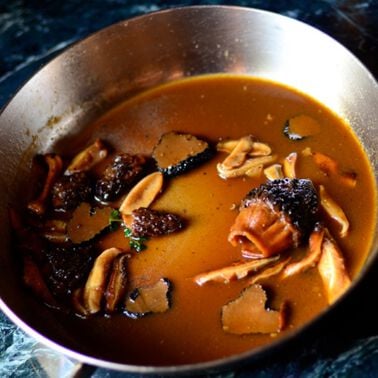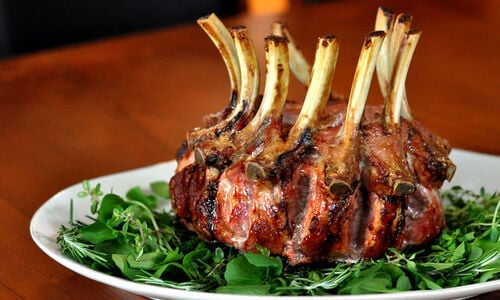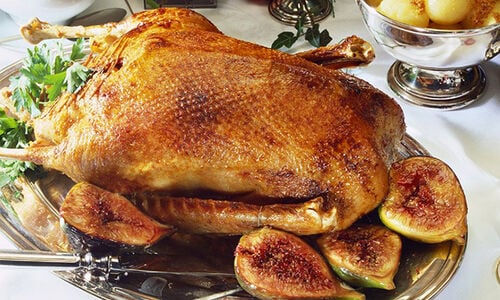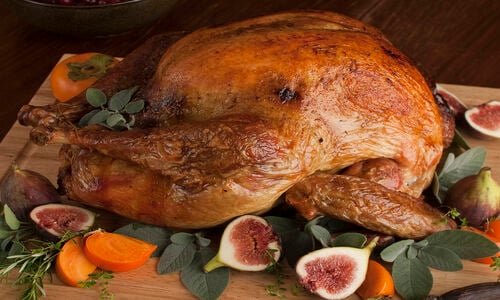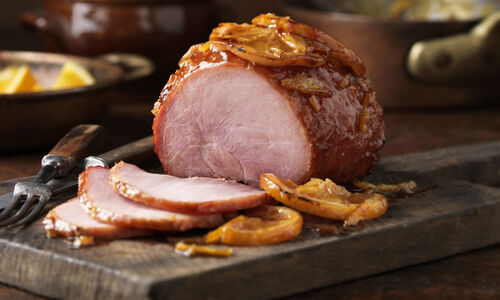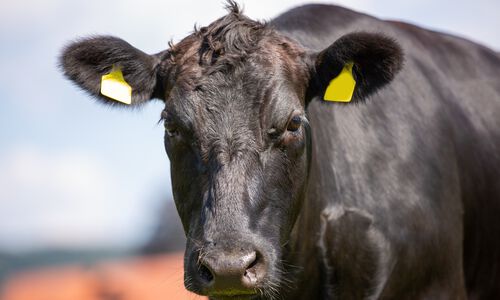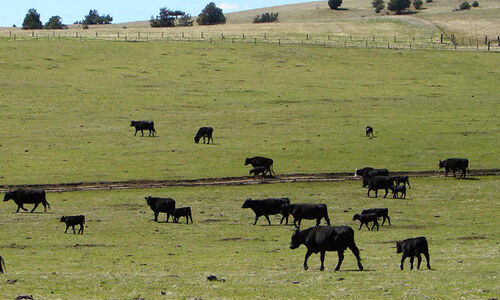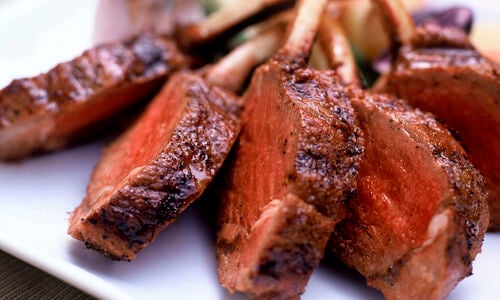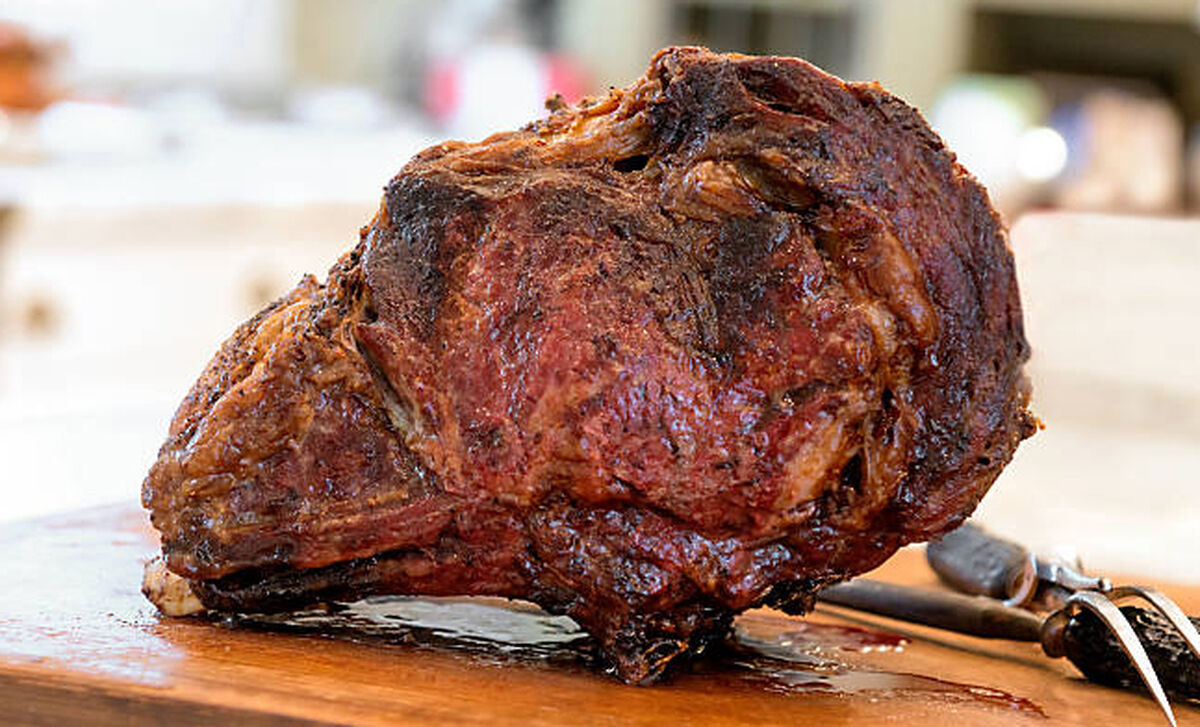
The Best of the Best
When it comes to beef roasts, there is nothing so sublime as a big, perfectly roasted ribeye. It is the succulent, mouth-watering stuff a true carnivore’s dreams are made of, the pièce de résistance that can leave even the most casual of meat-eaters awestruck. If your roast happens to be from our beautiful, whole muscle ribeye cut of Wagyu, Angus, or 100% grass-fed beef, your guests may never forget it.
If this superlative praise raises concerns that it must require extreme effort or elaborate preparation, let us assure you that nothing could be further from the truth. Our whole ribeye cut comes to you with the cap beautifully trimmed and the chine, feather, and rib bones removed. All you need do is cut the roast to size and reward yourself by saving the rest for exquisite ribeye steaks or possibly more roasts. On top of all that, this boneless wonder is also the easiest rib cut to carve at the table.
To make matters even simpler, we also offer a three-bone Angus beef standing rib roast that's trimmed, tied, and ready to go. After roasting, resting, and presenting, all you need to do is cut the twine away and the semi-detached bones can easily be removed for carving.
Before You Cut to Size
Before you cut your roast to size here are a few things to consider. The ribeye section graduates in size from end to end, the larger is the shoulder end, and the smaller is the loin end. If you cut your roast from either end the graduated shape naturally yields a roast that will finish rarer on the larger end, giving you the ability to offer varying degrees of doneness. If you want a more consistent degree of doneness throughout the roast, cut it from the center of the rib section.
Before you cut your roast to size, also determine the number of servings that you want to provide. An easy rule of thumb for averaging portions is to allow anywhere from a generous 1/2-pound to a generous 3/4-pound per each adult serving. If you anticipate seconds and/or want leftovers for great sandwiches, allow for each as an additional half or full size serving when adding up the total number of servings that you want.
Simple Roasting
A moderate oven is best for roasting, to preserve succulence and minimize shrinkage. As for preparation, some purists consider anything more than rubbing the roast with oil a sacrilege. Begin by preheating the oven to 325°F for at least 20 minutes before placing the roast inside. Rub the roast with softened rendered duck fat, and season generously with kosher salt and coarse, freshly ground pepper. Then place it on a rack in a shallow roasting pan with the fat side up. The pan goes in the lower third of the oven, with the rounded end of the roast towards the back of the oven. After that, all you need to do is baste every 20 minutes, using melted duck fat until there are enough accumulated pan drippings for basting.
That’s basically it.
Is It Done Yet?
Use a quick-read meat thermometer to test for doneness at the thickest part of the roast. If you want a true rosy-red rare at the large end of a 10-pound loin end roast, take it out of the oven when you reach an internal temperature of 120°F. At the same time the small end will probably read at about 125°F and after resting, will end up at pinky rare.
If you want the finished roast medium rare at the large end, roast to an internal temperature of 125° to 130°F. Watch very carefully as just a few minutes will bring the temperature up several degrees.
When done, take the ribeye roast out of the oven and allow about 30 minutes for the meat to rest before carving. Resting is a very important step and should not be rushed or skipped. This time allows precious juices to resettle into the meat and the meat will firm up some for easier carving.
To A Degree
Degree of doneness is definitely a matter of personal choice. For a quality ribeye roast, most prefer the meat on the medium-rare side. Whatever your preference, we recommend that you absolutely do not exceed the USDA’s recommendation of a final 145°F internal temperature.
Use these times and internal temperatures as a guide to help determine when to take the roast from the oven to reach your chosen degree of doneness. These times are based on roasts weighing 6 pounds and up. The internal temperature of the roast will continue to rise approximately 10 degrees when resting for about 30 minutes, depending on the size of your roast.
Desired Doneness Approximate Cooking Time (at 325°F) Internal Temperature* (reached to remove the roast from the oven)
- Rare 12-13 minutes per pound 120°F to 122°F
- Medium Rare 14-16 minutes per pound 125°F to 130°F
- Medium 18 minutes per pound 140° F Medium Well 19 minutes per pound 150° F
*USDA recommends an internal temperature of 145°F.
QUICK TIPS
- Take the roast out of the refrigerator about two hours or so before cooking. A roast should come to about room temperature before going in the oven. Make sure the room is not hot or humid.
- Use a shallow roasting pan with a rack that positions most of the roast above the sides of the pan. This allows the air to circulate evenly around the roast. A too deep pan will inhibit proper browning.
- This method of oven roasting is based on indirect, dry heat so no cover and no added liquid.
- If your roast is too large to go into the oven rounded side towards the back, then place the roast with the largest end towards the back.
- Some purists don’t season the roast at all before cooking; while in addition to salt and pepper, other cooks may add finely minced garlic or other seasonings to the softened duck fat before rubbing it over the roast. You may also want to use a recipe for a good flavor rub. It’s strictly a matter of personal taste.
- Wait until the last 20 to 30 minutes of your estimated cooking range before beginning to test for doneness. You want to be sure of reaching the right internal temperature, but be mindful that too many holes may cost the loss of precious juices.
- Once you reach an internal temperature of 110°F, do watch the temperature closely as it rises very quickly from this point forward.
- A 3 to 4-pound roast will take about 1 to 1-3/4 hours including the first 15 minutes at 450°F with the remainder of time at 325°F.
